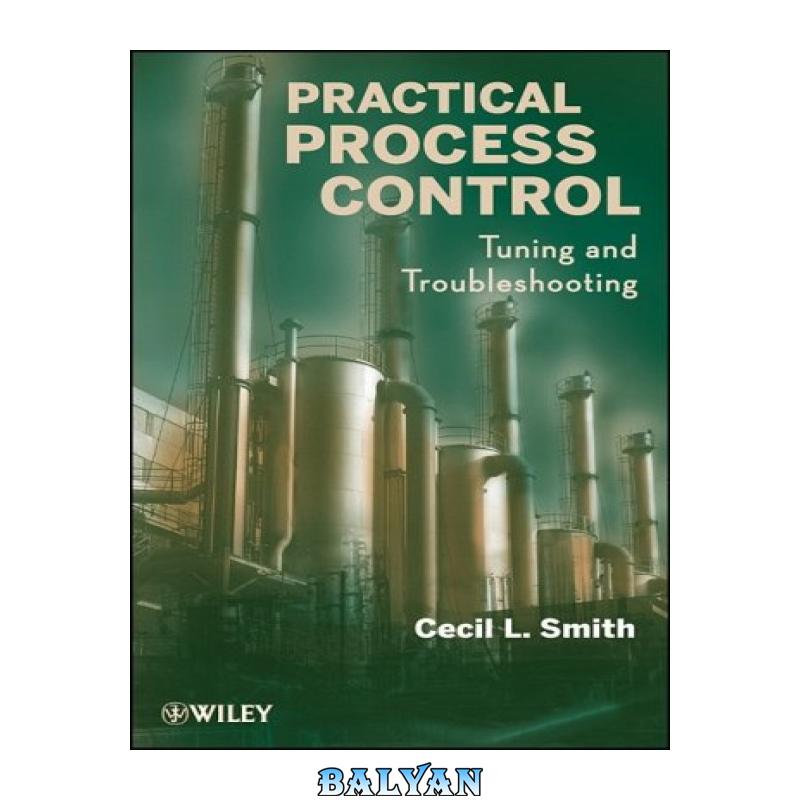ترجمه فارسی توضیحات (ترجمه ماشینی)
کنترل فرآیند عملی: تنظیم و عیب یابی
کنترل فرآیند عملی (تنظیم حلقه و عیب یابی). این کتاب از چند جهت با کتاب های موجود در بازار تفاوت دارد. اولاً، ارائه کاملاً در حوزه زمانی است (کلمه “LaPlace” در هیچ کجا یافت نمی شود). تمرکز کتاب در واقع عیب یابی است نه تنظیم. اگر یک کنترلر “قابل تنظیم” باشد، روند تنظیم ساده و بدون حادثه خواهد بود. اما اگر یک حلقه “غیرقابل تنظیم” باشد، معمولاً در اوایل تلاش برای تنظیم، مشکلاتی را تجربه میکنند. ماهیت هر مشکلی سرنخهای ارزشمندی برای آنچه حلقه را «غیرقابل اجرا» میکند ارائه میکند. به عنوان مثال، اگر کاهش بهره کنترل کننده منجر به افزایش نوسانات شود، باید به دنبال تعامل احتمالی با یک یا چند حلقه دیگر بود. مشکلات تنظیم همیشه نشانه مشکلات دیگر است. عیبیابی مؤثر شامل شناخت سرنخها، شناسایی علت اصلی مشکل و انجام اصلاحات است.
علاوه بر این، بیشتر حلقهها به دلیل برخی از جنبههای رفتار حالت پایدار فرآیند «غیرقابل اجرا» میشوند. در نتیجه، این کتاب بیشتر بر رابطه کنترل فرآیند با ویژگیهای فرآیند حالت پایدار تمرکز دارد تا ویژگیهای فرآیند پویا. یکی از پیش نیازهای عیب یابی مؤثر، «ابهام زدایی» برخی از ویژگی های معادلات کنترل PID است. یکی از جنبه های منحصر به فرد این کتاب این است که تمام جنبه های معادله کنترل PID را در حوزه زمانی توضیح می دهد (از جمله تفاوت بین اشکال موازی و سری PID، فرم بازخورد بازنشانی معادله PID، بازنشانی حفاظت از پنجره بازنشانی و غیره .) کتاب بر یک نمودار P&I مناسب (فرآیند و ابزار دقیق) به عنوان مهم برای تنظیم موفقیت آمیز تاکید می کند. اگر P&I درست نباشد، مشکلات تنظیم اجتناب ناپذیر است. توسعه و تجزیه و تحلیل نمودارهای P&I یک جنبه حیاتی در عیب یابی است.
Practical Process Control (loop tuning and troubleshooting). This book differs from others on the market in several respects. First, the presentation is totally in the time domain (the word “LaPlace” is nowhere to be found). The focus of the book is actually troubleshooting, not tuning. If a controller is “tunable”, the tuning procedure will be straightforward and uneventful. But if a loop is “untunable”, difficulties will be experienced, usually early in the tuning effort. The nature of any difficulty provides valuable clues to what is rendering the loop “untunable”. For example, if reducing the controller gain leads to increased oscillations, one should look for possible interaction with one or more other loops. Tuning difficulties are always symptoms of other problems; effective troubleshooting involves recognizing the clues, identifying the root cause of the problem, and making corrections.
Furthermore, most loops are rendered “untunable” due to some aspect of the steady-state behavior of the process. Consequently, the book focuses more on the relationship of process control to steady-state process characteristics than to dynamic process characteristics. One prerequisite to effective troubleshooting is to “demystify” some of the characteristics of the PID control equations. One unique aspect of this book is that it explains in the time domain all aspects of the PID control equation (including as the difference between the parallel and series forms of the PID, the reset feedback form of the PID equation, reset windup protection, etc.) The book stresses an appropriate P&I (process and instrumentation) diagram as critical to successful tuning. If the P&I is not right, tuning difficulties are inevitable. Developing and analyzing P&I diagrams is a critical aspect of troubleshooting.












نقد و بررسیها
هنوز بررسیای ثبت نشده است.